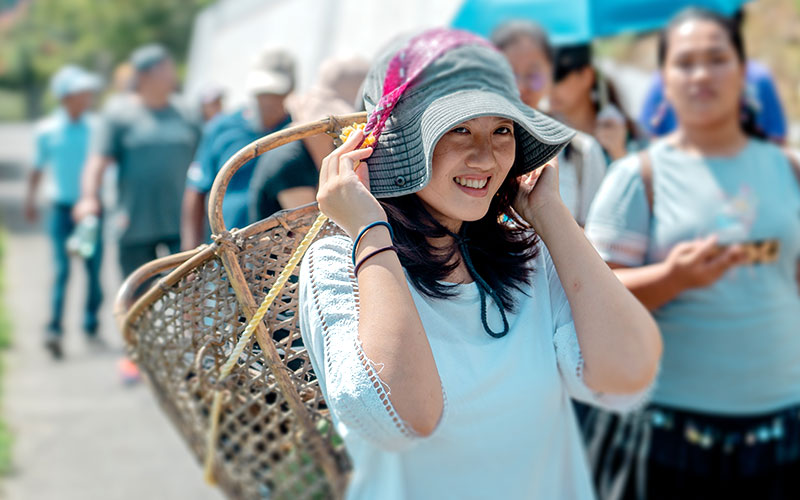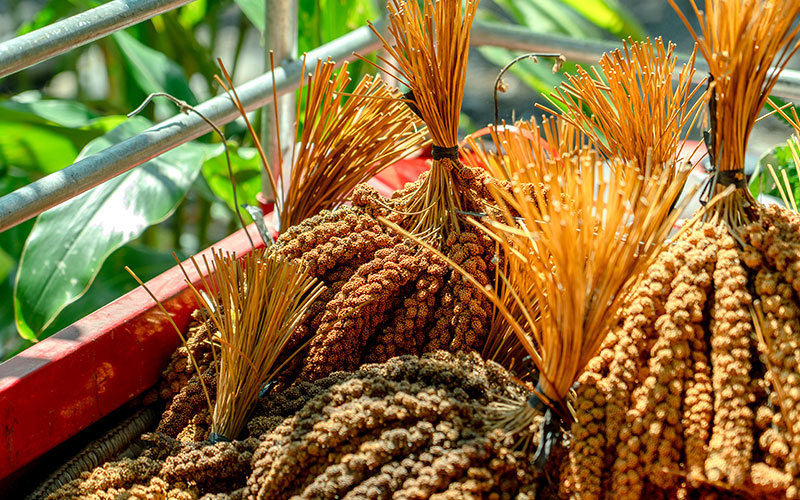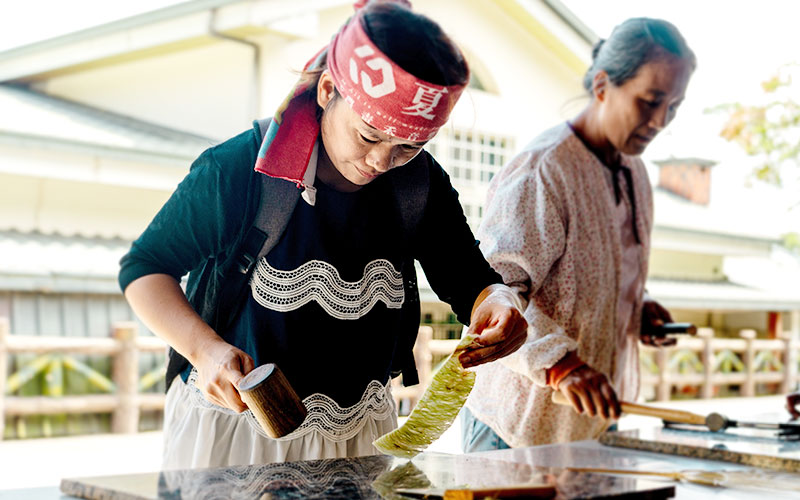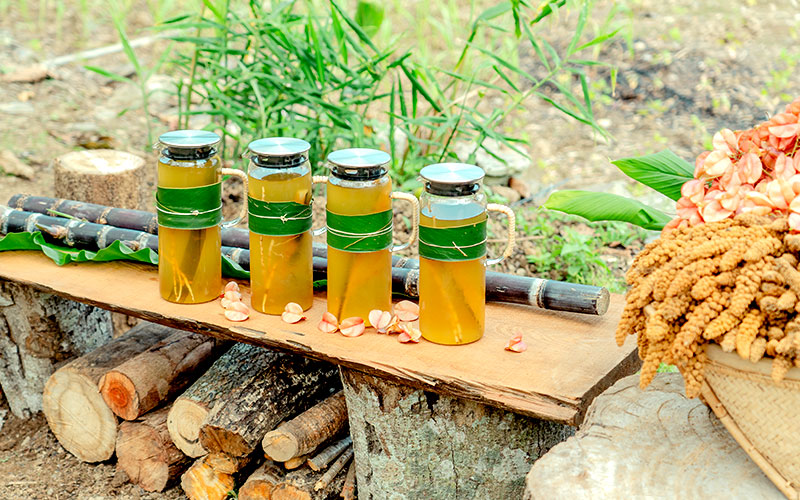Kamcing Tribe
Kamcing Tribe

部落介紹
Millet field at the foot of the mountain where Bunun traditional music is sung.
Kamcing Tribe is located on the hills of Haiduan Township. Millet fields are mixed with red quinoa fields. From a distance, they look like stars of gold and pink colors.
With preserving cultural heritage and traditions as their mission, the Guyana Workroom was established in this beautiful tribe. One-day and half-day tours are offered here, featuring the Bunun drawing calendar, millet specialty meals, and plant dyeing craft. Visitors from everywhere are hosted here. The Workroom spares no effort in promote tribal tourism.To revive the Bunun traditional diet, Hu Tianguo of Guyana Workroom overcame all difficulties to grow millet again in the tribe, in the hope of restoring the culinary traditions of millet. After tasting his millet dishes, the Tribe's elders were very moved to finally be able to have the nostalgic food again.
In 1943, Japanese ethnic musician, Takatomo Kurosawa, heard the Bunun eight-part polyphony Pasibutbut at Kamcing for the first time so Kanming is regarded as the place where Pasibutbut was discovered and recorded. To preserve the music tradition, Hu Tianguo formed the Kamcing Bunun choir in the hope that Bunun traditional songs can once again be sung in the millet fields.

部落美味
Millet Swing Dining
Centered on the concept of "home," the design of dining tables at Kamcing entails the Bunun family values.
The theme of swings embodies the carefree lifestyle in nature and loving relationships. Making good use of the abundant local ingredients, the fragrant millet rice infused with shell-ginger leaves, red quinoa leaf tempura, Japanese climbing ferns, fried pork with taro stems, Bunun pickled vegetables are all unique and unforgettable dishes. They also make people reflect upon the essence of life, feel content, and share.※ In addition to the millet swing dining, the Tribe also provides other tribal meals.
走訪部落

Bark cloth making
Bark cloth is a material often used by Austronesian-speaking people. The bark is collected from paper mulberry. After beating and treatment, it can be used as containers or materials for clothes. The second oldest daughter of the Guyana Workroom, Ibu, is dedicated to research of traditional fiber plants, as well as the selection and application of plant fibers of ramie, bamboo, and rattan, plant dyeing, and paper mulberry bark, hoping to reinterpret the use of traditional plants in modern life. Join the DIY experience of beating, processing, and extending paper mulberry bark.
Three-stone stove
Traditionally, the Bunun people believed that once a plot of land has been used to plant millet, it will become less fertile. Crop rotation is used as a solution to this problem so new land for growing millet is regularly required. In the past, when the males in the family went out hunting, they would also look for new land on the way. When they found suitable land, a three-stone stove would be set up to claim land ownership. During the Millet Swing Dining activity, all participants will also get a chance to build a three-stone stove together.
The Bunun drawing calendar
The only Bunun pictograph that has been passed down is a work calendar marked for millet planting. The drawing calendar is family-based, and the symbols are all original, created with family characteristics. Different symbols represent different annual rituals, such as the season of millet sowing, soil turning, weeding, etc. Important rituals such as the Malahtangia hunting ceremony are also marked on the calendar. Learn about the interesting drawing calendar drawn on the bark through the briefing of Papa Tianguo at the Guyana Workroom.
The millet experience
Not undressing, but threshing and hulling! Millet has an important role in Bunun life and in millet there is the taste of home. Millet is also a symbol of sharing among the Bunun people. When a big pot of steamed millet is served, everyone at the table takes a spoon and eats it one scoop at a time. This way of eating together makes it taste better. The processing of millet requires threshing and hulling. Come and try rubbing millet under your feet.

Treasure hunting in Mother's
vegetable garden Red quinoa leaves, sweet potato leaves, pumpkins, tana, small bittercress… Mama Jinjiao's vegetable garden is a paradise for treasure hunting in your wildest dreams, full of wonders and surprises waiting for you to explore. All that is grown on trees and in the ground can be cooking ingredients. Every wild vegetable you collect here will become the ingredients for the meal. Throw all of them into a large pot and make a vegetable and meat stew. Everyone can have a farm-to-table experience.
Reservations
Tour 1
One-day tour of Millet Swing Dining: Bark cloth making → Three-stone stove → Millet Swing Dining → Bunun drawing calendar→ Treasure hunting in Mother's vegetable garden → The millet experience
Tour 2
Half-day tour of tribal cuisine: Bunun drawing calendar → The millet experience → millet meal